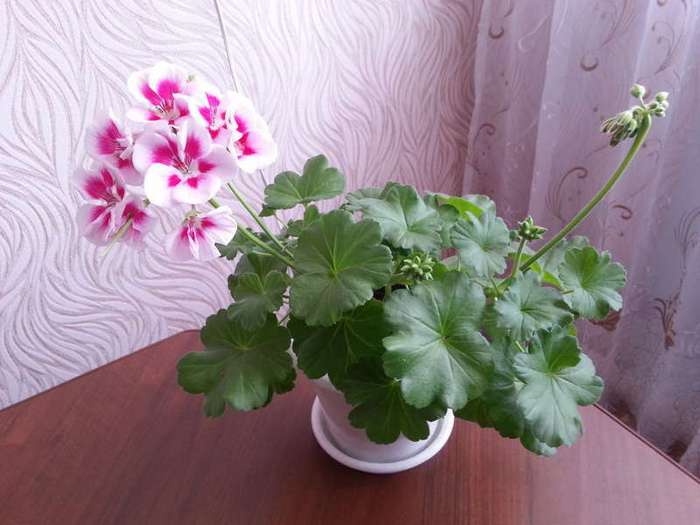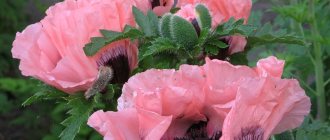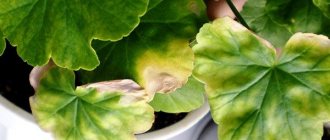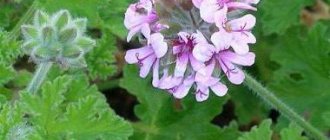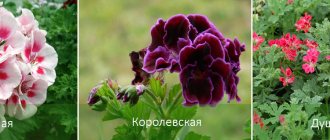About the plant
Pelargonium is better known as geranium. Few people know, but this flower is suitable not only for home living, but also in the open field, it feels good. Therefore, geraniums are also loved by landscape designers. Read more about caring for pelargonium in the garden in this article, and you can learn more about growing a plant at home here.
The plant can be either annual or perennial. Height reaches 50 cm. The leaves are large with a dark green color with white stripes along the edges. The peculiarity of geranium is that it has a lemon, meadow and mint aroma.
Chemical composition
Pelargonium leaves contain:
- various essential oils;
- phytoncides;
- resin;
- flavonoids;
- tannins;
- pectins;
- gum;
- glycosides;
- pectins;
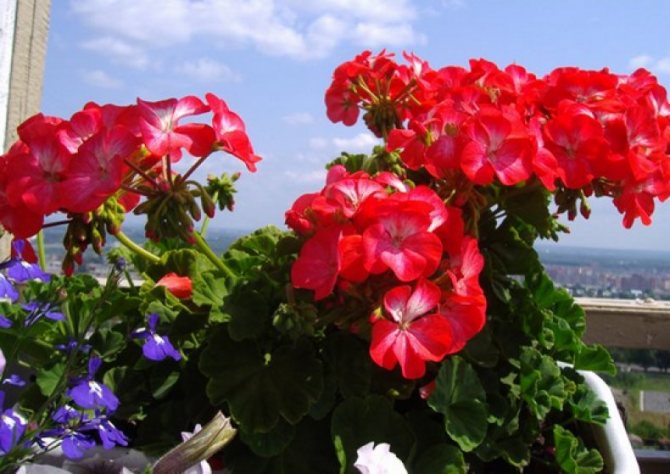
- tannins;
- organic acids;
- phenolic acids;
- vitamins;
- minerals (most of all - calcium);
- carbohydrates;
- saponins;
- coumarins.
Essential oils contain esters, terpenes and their alcohols, ketones.
According to various studies, this plant contains up to 500 different components and is highly bioactive. A volatile substance with a pleasant odor, geraniol, which has antimicrobial properties, used in the manufacture of cosmetics and perfumery, was found in this plant.


Pelargonium roots also contain phenols, and the stems are phenolic compounds, sucrose, starch, hemicellulose.
Geranium in the house: benefits and harms
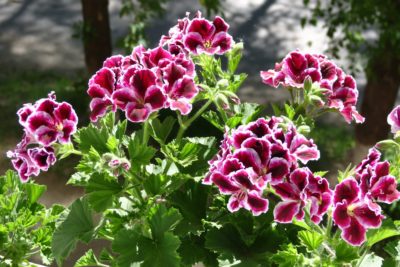

Why is pelargonium useful, can it do harm. and is it also poisonous or not? In geraniums, all parts of the plant are beneficial. Even the scent of a flower has healing properties, thanks to which the general condition of the body improves. The presence of a plant in the house has a beneficial effect on the physical and mental activity of household members. Indoor geranium has antimicrobial effects. These data are confirmed by laboratory tests.
Liquid infected with staphylococcus was dripped onto the leaves of the plant. After a while, no bacteria remained on the leaves of the flower. In addition, geranium removes toxins and can even neutralize snake venom. The flower helps to fight puffiness and apathy, relieves nervous tension and stress. During pregnancy, geranium oil is used against stretch marks.
Important! Despite all the usefulness of the properties of geranium, it can be harmful. Of course, it does not contain poison, but it is not recommended to grow this flower in certain cases.
It is contraindicated to grow a flower for allergy sufferers, it can trigger an asthma attack. You also need to carefully monitor the health of the child if there is pelargonium in the house. Close attention to children under 12 years old, treatment with drugs based on geranium is not recommended for them. You should not put the flower in an easily accessible place for pets.
If the animal tastes the plant, it can easily get poisoned.
Caution does not hurt
Geranium can be harmful if used for gastritis with high acidity. For oral administration, there are still significant contraindications:
- ulcer,
- thrombophlebitis.
- pregnancy.
- elderly people.
- Small children.
For external use, it can be used for both children and the elderly. In children, otitis media is well treated.
Saturate cotton wool with geranium oil, insert into the ear, tie with a handkerchief. Untreated otitis media can go away even after one procedure. For other ear diseases, geranium oil will also help. Before using the oil for treatment, do an allergy test.
As soon as you feel that the child has caught a cold or you yourself have caught a cold, immediately wrap your thumbs with fresh leaves on your feet, leave them overnight. In the morning, the disease will recede. For a runny nose, drip 3 drops of fresh juice from pelargonium flowers.
Healing properties
Geranium is often used for colds and acute respiratory infections. The extract of the plant can be used to gargle, rinse the nasal passages, and treat stomatitis. With otitis media, it is enough to roll a leaf of the plant and apply it to the inflamed ear. This will kill all germs and reduce inflammation.
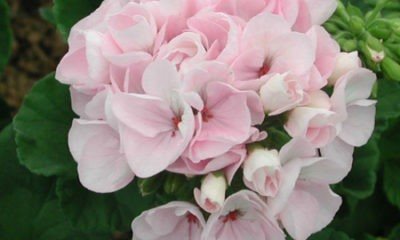

A decoction of flowers eliminates toothache. And medicinal ointments from a flower help to calm the nervous system. Medicinal oils are used in the cosmetic industry. They stabilize hormones and even out complexion, promote healing, rejuvenation and hydration.
To normalize the pressure, it is enough to tie the leaf of the plant to the pulse of the left hand for 30 minutes. With neuralgia, it is enough to attach 2-3 sheets to the desired area and rewind with a warm cloth. Can be wrapped in a woolen shawl. After 30 minutes, replace the leaves with fresh ones. After 2-3 hours, the pain should go away. In addition to the already listed geraniums:
- lowers blood sugar;
- softens dry corns;
- improves the condition of the intestines and stomach;
- treats eye diseases;
- removes salts from the body;
- improves blood clotting;
- eliminates inflammatory processes.
What diseases should be treated with geraniums externally


Skin diseases - boils, burns, cuts, dermatitis can be treated by applying juicy gruel from pelargonium leaves to the damaged areas. Simply grind the required amount of leaves in a blender or mash until juicing appears.
Arthrosis-arthritis, osteochondrosis - prepare a compress from the crushed leaves of the plant that have let the juice. Apply to the sore joint or to the place of pain in the spine, cover with parchment paper, warm and secure the bandage. Perform the procedure at night until the pain subsides.
Application in traditional medicine
Geranium can be used to treat and prevent many diseases. To get rid of thrush and heart pain, use alcohol tincture. To prepare it, you need a leaf of a plant (10 g), pour ethanol or vodka (100 ml). Insist for 12 days and apply for external and internal treatment. Can also be used to prevent colds.


How to make geranium oil?- Crushed flowers and leaves are poured with alcohol in equal proportions.
Place the mixture in a glass bottle that will be no more than half full.
- Put the bottle in a bright place, after 15 days pour vegetable oil to the top.
- Leave to insist in the sun for half a month. The product is filtered and stored in a closed jar.
- To prepare a decoction of pelargonium, you need to pour 250 ml of cold water into 1 spoon of the plant rhizome. The mixture is put on fire and boiled for about 10 minutes. The broth is infused for an hour and filtered. The decoction can be used to dissolve kidney stones. Before taking, it is diluted with water and taken up to 4 times a day.
- To normalize bowel function or eliminate painful sensations with gout and rheumatism, prepare an infusion. Pour 15 g of dry crushed leaves with 500 ml of boiled cooled water. The mixture is infused for 8 hours. Apply 10 ml every 2 hours.
- In case of inflammation of the eyelids, it is recommended to rinse the eyes with water with geraniums and honey. For 10 g of crushed leaves, 200 ml of water. Mix with honey - 5 mg. Everything is mixed and infused overnight. The eyelids are rinsed twice a day.
It can be used to treat inflammatory diseases of the throat, ears and nose. It can also be used for burns and frostbite to restore the skin, for eczema and rashes. The oil is famous for its analgesic properties, improves blood pressure, improves blood microcirculation. In addition, it is an excellent remedy for pain during menstruation.
All remedies are based on leaves, flowers and rhizomes. Therefore, it is necessary to procure raw materials on time. Leaves and flowers are harvested mainly in mid-June. The roots are harvested in late summer or early fall. When drying, the temperature should not exceed 40 C. Raw materials are stored exclusively in wooden containers or burlap.
What ailments and diseases does pelargonium treat?
Inflammatory diseases of the nasopharynx (colds, flu), accompanied by a runny nose, cough, sore throat, shooting in the ear.
Rubbing a leaf of geranium crushed between the fingers of the wings of the nose and the bridge of the nose will help from a runny nose. You can twist a leaf, crush it and insert it into each nostril in the form of a wick. You can squeeze out a little juice and instill 2 drops several times a day. Geranium relieves puffiness and nasal congestion, facilitates nasal breathing.
What else does geranium cure? With initial pain in the ear, both children and adults can knead the leaf, twist it into a tube and insert it into the auricle at night. Of course, this does not mean that you will not need a doctor. However, it is quite possible that geranium will prevent the progression of inflammation and wake up with a healthy ear in the morning.
Inhalation will help with coughing. You can boil a couple of potatoes in their uniforms, knead them and drip 2-4 drops of essential geranium oil. Breathe over the steam, covered with a towel for 10-12 minutes, repeating the procedure for 5-7-10 days.
According to another recipe, you need to take a mixture of dry anti-inflammatory herbs: pharmacy chamomile, thyme and coltsfoot (two tablespoons), throw in 1 liter of water.When the mixture boils, remove from heat and add a spoonful of baking soda and drip a few drops of geranium oil ... Then also breathe over the steam.
Well, for a sore throat, gargles with diluted geranium juice and a teaspoon of honey are good.
Contraindications
The main contraindications for the use of geranium are:
- gestational period and breastfeeding;
- pathology of the digestive tract: erosion, ulcers, impaired muscle tone, decreased acidity of the stomach, gastritis, constipation;
- history of allergic reactions, individual intolerance to any of the components of manufactured raw materials;
- it is forbidden to use geranium from pressure;
- pathology of the cardiovascular system: thrombophlebitis, increased platelet count and blood clotting factors;
If the prohibitions are violated and the medicine is used in alternative therapy in the presence of the listed contraindications, the patient's condition may deteriorate sharply.
When geranium can be harmful
It is necessary to study not only the medicinal properties and contraindications characteristic of fragrant geraniums, but also the possible harm. With correctly collected raw materials and adherence to the preparation scheme, the products have a positive effect on the body.
Violations of the rules under which the use of the drug is harmful:
- picking a plant at the wrong time;
- workpiece at high temperature or humidity with a lot of sunlight;
- storage in improper packaging and at high humidity, which contributes to rotting and multiplication of bacteria, fungi;
- violation of a cooking recipe;
- ignoring age restrictions (it is not recommended to use a self-prepared medicine under 16 years old);
- lack of prior consultation with a doctor.
Harm can be caused to pregnant and lactating women. Despite the fact that the patient does not have allergies, the remedy will affect the development of the fetus or the health of the newborn.
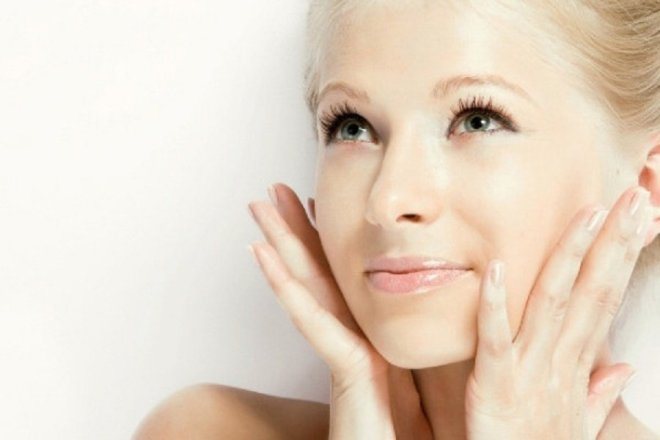

biologically active components contained in geraniums nourish and moisturize the skin well, which allows the plant to be used for cosmetic purposes





